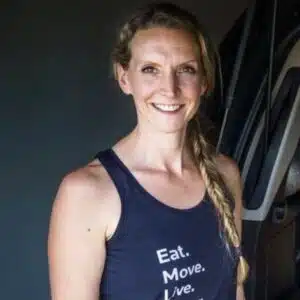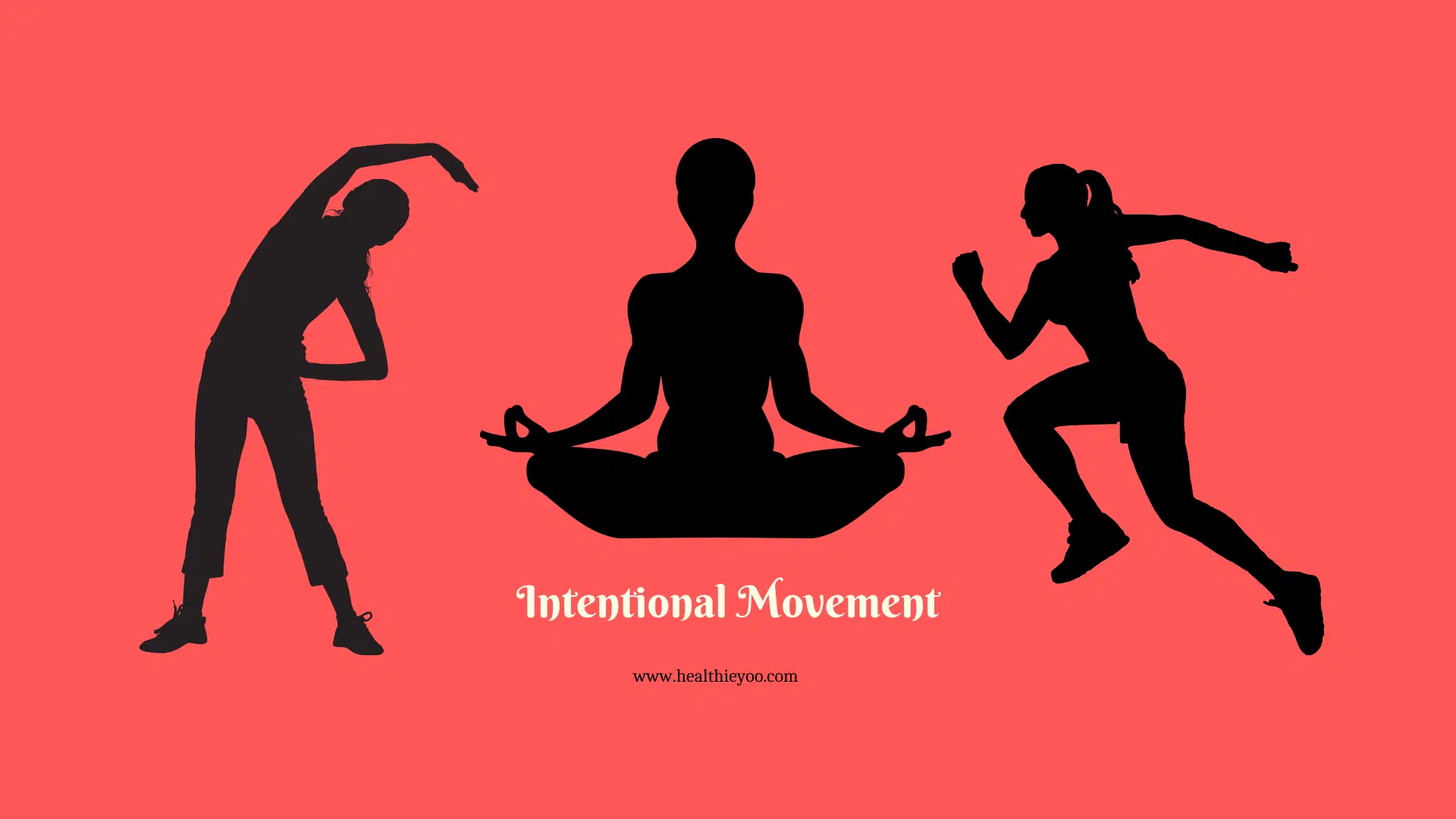What is intentional movement? What is the correlation between disease and intentional movement? How to make intentional movement a habit?
Joy is our natural state
If you have watched any child five years of age and below, you will notice pure joy during playtime. We were children once, and then we grew up and somehow forgot how to dance to the beat of our own drums. Amidst the humdrum, helter-skelter of life, we’ve forgotten how to jump with glee, scream with abandon, laugh till our belly aches, be silly, be playful, or just be. Adulting should not rob us of our childlikeness. We were created to move. Life is energy in motion. Movement is life.
The Invisible Culprit
In industrialized parts of the country, life is fast-paced and requires the mind and body to be sharp. The images of us humans rushing through daily commutes with a cup of coffee while on the phone, or others stuck in traffic, tense because they must get somewhere as soon as possible, conjures stress.
When asked we say, I exercise from time to time, I eat healthily sometimes, and I have work and bills to pay. So, we put off the good habits for yet another day. We continue the cycle of prolonged movement, prolonged sitting, or haphazard movement during the day–moving the body to the beat of life’s demands. Somehow, the images of a hustle culture have made us believe that we’re lazy when we aren’t busy. But we know by now that busy doesn’t always mean productive.
We must stop and ask ourselves if this is really what constitutes a successful life. If our daily actions do nothing but accumulate stress emotionally, mentally, and physically, then we must reevaluate our definition of success, or risk this magnificent machine that is the human body falling apart under the stress.
The Correlation between dis-ease & movement
Most of the people who get diagnoses end up with conditions whose root causes are stress related. Stress shows up in the body in many ways. It manifests as depression, insulin resistance, anxiety, high blood pressure, heart disease, diabetes, cancer, obesity, and so much more. Other subtle consequences of unreleased stress are poor breathing, poor posture, poor sleep quality, brain fog, etc. The doctor then prescribes medications and advises you to eat a healthy diet and exercise.
In my practice as a nurse, medications do get picked up, but the healthy eating and exercise parts are saved for an unforeseen future date. Change is not always easy, and for those who’ve been accustomed to doing things a certain way, it becomes overwhelming to venture out of their comfort zones. Restricting our movements can lead to chronic damage. For example, the connective tissue in the joints begins to accumulate calcium and become stiff. This decreases musculoskeletal function causing us to slow down and eventually be immobile if not treated.
The American Medical Association and the Centers for Disease Control, list exercise as a necessity for good health. Citing that a brisk walk, for at least thirty minutes a day, is the bare minimum to maintaining a good heart and overall health.
Moving energy around
An object in motion stays in motion.— Sir Isaac Newton
Many times, our daily lives have the same repetitive movements which the brain sees as something to be automated, therefore using less energy. The more energy accumulates in the body, the more it manifests as a disease.
What then is intentional movement?
It is a practice of mindfully moving the body, not about physical exercise only. Being intentional about movement means deciding to carve out time daily to do things that bring the body to a state of relaxation or rest.
1. Physical exercise
It is the most practiced form of intentional movement. However, the general population assumes a gym membership is needed for physical exercise. The advancement in exercise technology has placed a gym inside our homes in the most recent format, Peloton. However, that is a financial commitment that most people are unable to sustain for an extended period.
I suggest free weights or bodyweight exercises which we need as we age to maintain strong joints. The easiest of all exercises is brisk walking. To sustain a habit of daily physical exercise, pick the activity, set a time and place for it to be done, and, the amount of time for the activity. This gives the brain predictability, therefore using less energy. Physical exercise improves posture, decreases insulin resistance, improves sleep, and increases mental clarity and overall self-confidence.
2. Breathing
The practice of breathing is becoming more mainstream. There are practices that incorporate breathing techniques that have different benefits for the body. Practices like the Wim Hoff method incorporate ice baths with breathing techniques to improve overall health. Qigong improves the mind-body connection for the body to heal itself. The American Lung Association lists breathing techniques to improve posture, physical fitness, and overall improved health. What breathing does is that it improves mental function and regulates emotions, which decreases overall stress.
3. Dancing
Dancing as intentional movement creates unique states of being physical which shifts the mind into a place of joy. The feeling of hopping around your living room or a quiet corner in a public place informs the brain to relax. Our abilities as dancers do not require formal training. It requires feeling the music and moving however we see fit.
4. Stretching
Stretching intentionally during the day is key to maintaining energy and posture. If you sit at a desk, there are plenty of resources online for stretches for sedentary workers. If your job requires being on your feet for several hours at a time, there are simple back, neck, hip, knees, and ankle stretches that can be easily completed in one or two minutes throughout the day. For extended versions of stretching, there are yoga and Pilates movements that are excellent for stretching daily.
5. Chores
As mundane as they sound, doing chores present an opportunity for mindfulness body mechanics; lifting heavy things using the thighs and not the back, finding a step stool to reach objects above our heads, or creating a wide base of support when picking up objects below the waist, and pivoting before twisting. Incorporating stretches between chores helps to prevent fatigue, sprains, and strains.
6. Meditation/Prayer
It is said that doing nothing is also an action. Many people may not consider prayer or meditation to be an action, but they are. When we meditate or pray, we choose to surrender to all the noise outside of us. We let go and focus on the moment, relinquishing our thoughts and cares. This too is intentional. We may not be moving physically while we do it, but energy is still being moved within.
How to make intentional movement a habit?
As a long-distance runner, I have been asked several times how I keep the habit. Habits are rooted in our programming, whether from childhood or from adult circumstances.
1. The first suggestion for creating the habit of intentional movement is to acknowledge that it is a necessity for a healthy life.
2. The second step is to find an accountability partner, someone who will hold you to the standards you are trying to achieve. If there are no trusted people close to you, find an anchor, something that the five senses perceive that reminds you of the goal of the movement. For example, a water bottle next to car keys, walking shoes by the front door, or lighting a candle next to the area where you want to stretch.
3. The third step will be to write down the days, time, and place where the activity will happen and assign a deadline for it to be done the same day. Start with five minutes or less and incrementally work your way up to the desired amount of time for your daily practice.
4. The fourth step is to journal your progress. Journaling frees up the mind from wandering thoughts and feelings and allows time to rest. Journaling is an effective way to measure how well and how far you are in your daily practice of intentional movement.
Even though the steps above are listed as separate steps, they can be stacked one week at a time to keep the process of habit change interesting and engaging.
When intentional movement becomes part of our daily practice, our sleep quality improves, hence improving our metabolism. When our metabolism is at optimal functioning, our minds are sharper, and we tend to choose healthier and more nutrition-dense foods. This in turn keeps off excess body weight and stress hormones from accumulating. At the moment when we are intentionally moving, we reconnect with our bodies and are better attuned to their needs.
You are the gift!
To live intentionally is to live in a continuous meditative state.
Be the change you want to see in the world, a quote by Gandhi starts with intention.
Intention becomes a habit. Habit becomes our character. Living mindfully is a gift not only to ourselves but to our communities and the world. Our energy is the highest gift we can give to the world.
How will you intentionally shift your energy today?

Georgette Nkwo
Related Posts

6 Tips to Create Healthy Habits for Big Results
Have you ever taken on rapid, drastic changes in the way you eat, think, and exercise in order to achieve a certain goal by a

Fitness is all about transforming mindsets
Monday Fitness Motivation Here is a Monday Fitness Motivation for fitness mindset by a Marathoner. No more fitness excuses! Fitness is a Mindset, Not a

Art Therapy for Mental Wellbeing
What is Art Therapy? Can you use art as therapy for your mental health and wellbeing? Mental Health And Wellbeing The World Health Organization

Behavior Change Begins In The Mind
Behavior Change Begins in the Mind Behavior change is difficult because individuals typically focus on what they are giving up as opposed to what

Healthy Aging Month 2022: You Are The “Driver” Of Your Health And Wellness
Healthy Aging Month 2022! September is designated as Healthy Aging Month! Let us celebrate healthy aging month 2022 and imbibe some real healthy aging

Body Composition Exercises For Weight Loss
What is body composition? What is BMI, the body mass index? How is BMI different from body composition? How do we achieve weight loss along

